Creating garden steps doesn’t have to break the bank or require fancy tools. With a few clever materials and a little free time, you can build beautiful, functional stairs that bring structure and personality to your outdoor space.
Whether you prefer the rustic charm of logs, the durability of stone, or the creativity of upcycled tires, there’s something here for every style and slope.
These garden stair ideas are relaxed, natural, and totally DIY-friendly. Most can be done on weekends using simple supplies, and some even repurpose old items lying around.
So if you’re dreaming of a prettier path through your garden, scroll through and save your favorite idea. One of them might just be the perfect weekend project for you.
#1. Brick Garden Stair
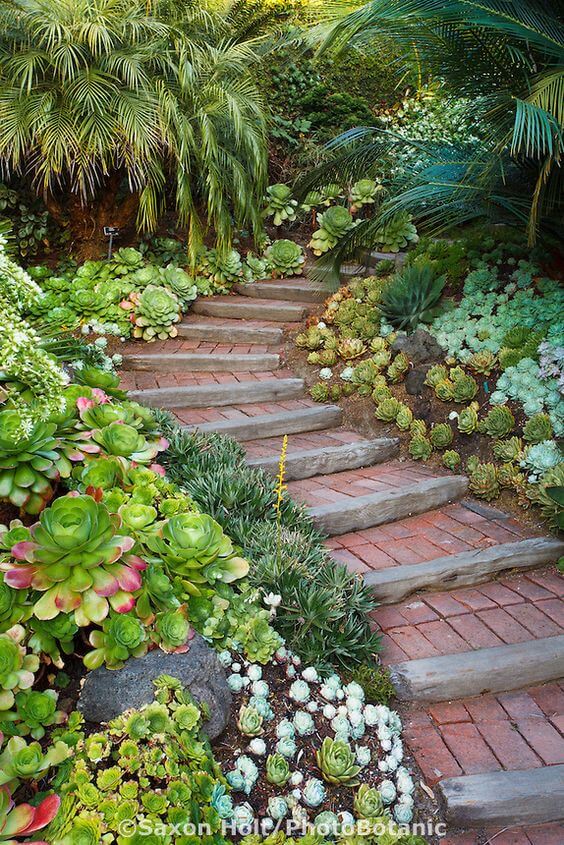
Image source: Photobotanic.photoshelter
Brick stairs offer timeless charm, and when paired with rustic wooden risers, they blend beautifully into a natural garden setting.
These steps wind gracefully through a lush landscape filled with succulents, giving the space a soft and sculptural texture. The brick surface provides a sturdy, non-slip footing, ideal for sloped paths or shady areas.
Lay bricks directly onto a packed gravel base, then secure wooden beams as risers for each level. Add a border of drought-tolerant plants for a polished, low-maintenance finish.
#2. Mossy Steps
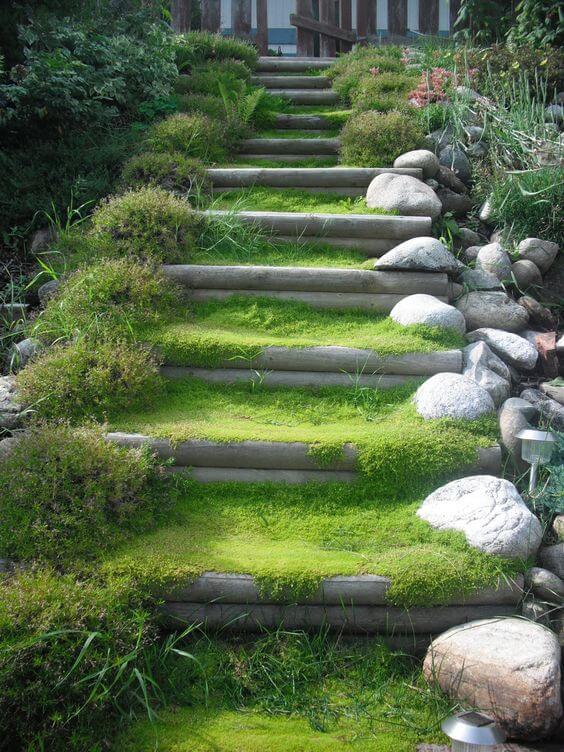
Image source: Deviantart
These moss-covered steps bring a magical woodland touch to your garden, almost like something out of a fairytale. The soft green carpet spreads naturally between rustic wood treads and stones, creating a lush and calming path.
Moss thrives in shady, damp areas, so it’s perfect for north-facing slopes or under tall trees. Lay wooden beams securely into the slope, then press moss patches into moist soil between each tread.
Mist regularly and keep foot traffic light to encourage thick, even growth.
#3. Logs With Crushed Stones Make Garden Steps
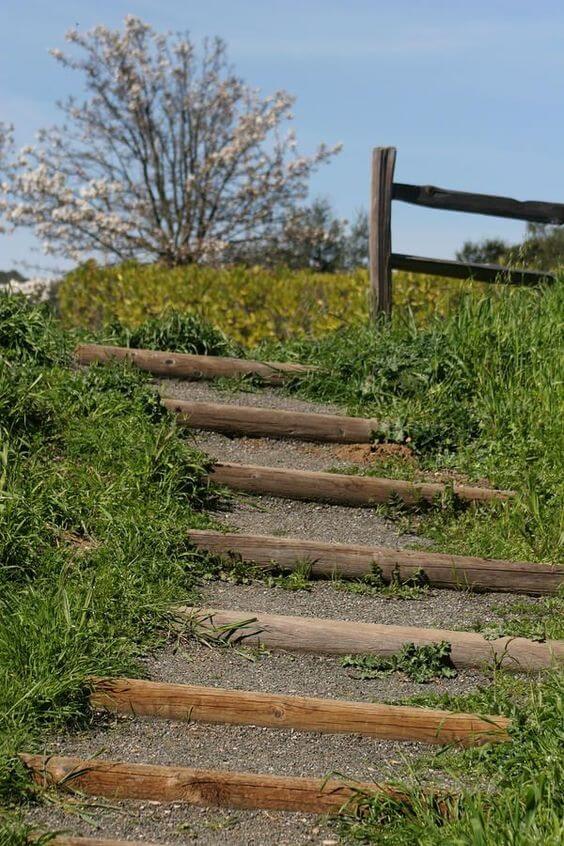
Image source: Silahsilah
This rustic setup uses nothing more than short logs and gravel to carve out a casual path up a grassy slope. The charm is in its simplicity; each step blends naturally with the surrounding greenery, creating a relaxed, countryside vibe.
It’s a great choice if you’re working with uneven terrain and want something that feels organic. Lay logs horizontally across the slope, spacing them evenly to define each step.
Fill the gaps with compacted gravel or soil, and let nearby grass grow in to soften the edges.
#4. Curved Wooden Garden Steps
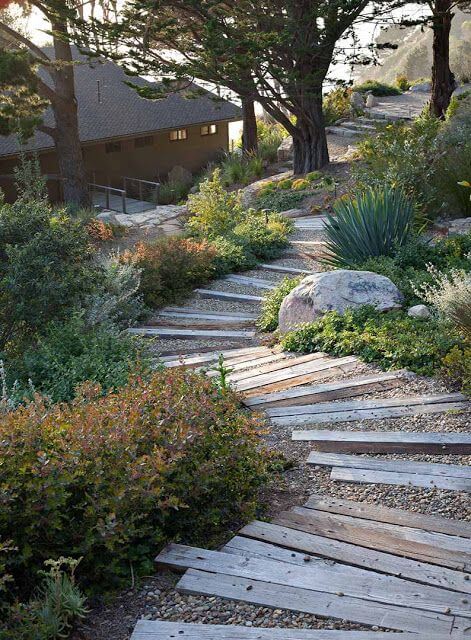
Image source: Thestylesaloniste
These sweeping wooden steps create a winding path that feels like it was pulled from a storybook. Uneven plank edges and staggered placement give the trail a relaxed, worn-in personality that suits natural landscapes.
The curved layout works beautifully on sloped terrain, making the descent feel smooth and welcoming. To recreate this, cut wood planks in varied lengths and angle them slightly as you follow the curve of your slope.
Fill the gaps with small gravel or pebbles to secure each board and prevent slipping.
#5. Wooden Garden Stairs
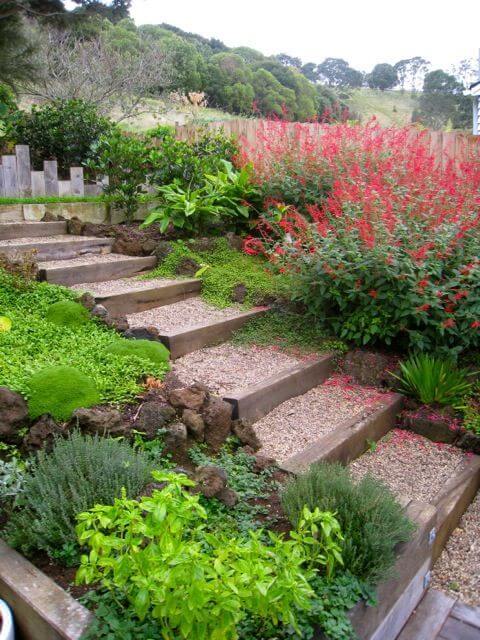
Image source: Modrastrecha
With their clean lines and simple frame, these wooden stairs bring a structured charm to your garden slope.
Surrounded by herbs and vibrant blooms, they blend beautifully into the landscape while offering reliable footing. The uniform rise and timber risers keep the design neat but still cozy.
To make this at home, secure treated timber beams horizontally into your hillside. Fill each step with compacted gravel or soil, and tuck in plants along the sides for a lush, lively touch.
#6. Wood with Pebble Garden Stair
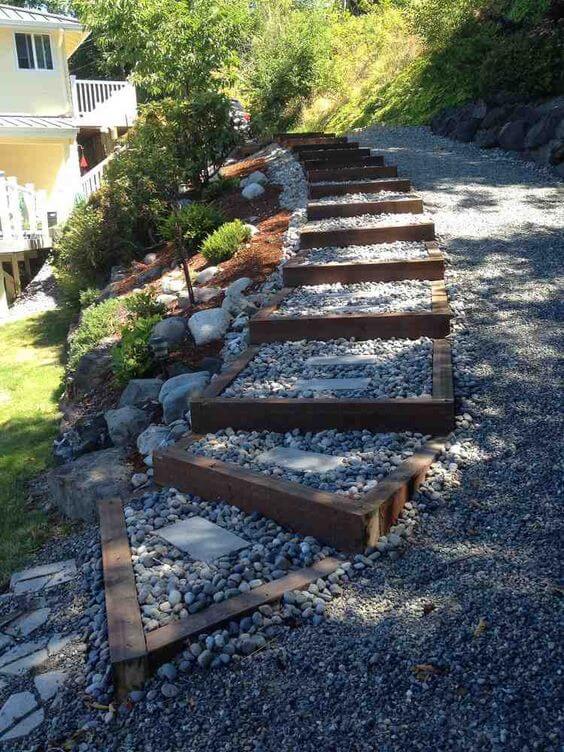
Image source: Deavita
These modern wood-framed stairs filled with smooth river pebbles offer a striking contrast between texture and structure.
The triangular design adds a creative twist to traditional garden steps and helps gently guide the eye along the slope. Perfect for sloped driveways or backyard paths, they stay tidy and low-maintenance.
To recreate the look, install timber borders first to frame each step. Fill the spaces with pebbles and place flat stones at the center for secure footing.
#7. Natural Garden Stair
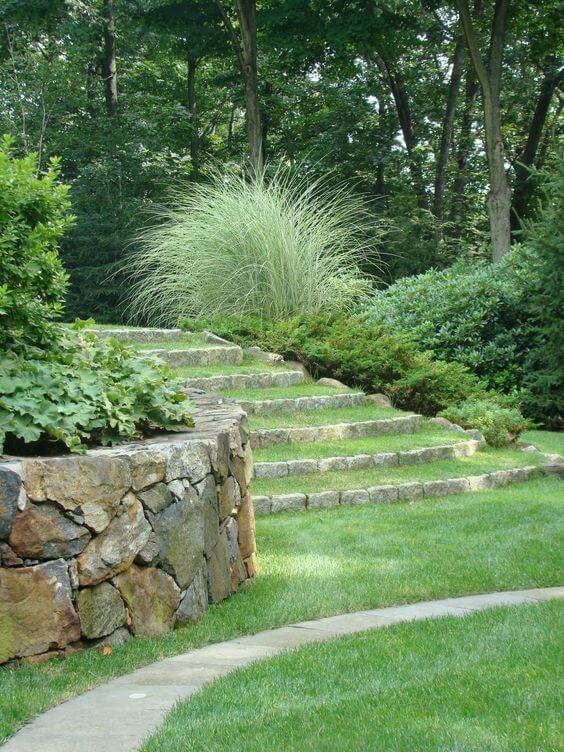
Image source: Gardeningsoul
This stone-bordered stair blends so seamlessly into the landscape, it almost feels like it’s always been there.
The gentle curves and grassy steps soften the look and invite you to take a peaceful walk through the garden. It’s a great way to connect different levels of a sloped yard without interrupting the natural flow.
Begin by outlining the shape with stones, then level each step and plant grass in between. Add evergreen shrubs or ornamental grasses along the edge to echo the organic vibe.
#8. Wood And Crushed Stones For Garden Steps
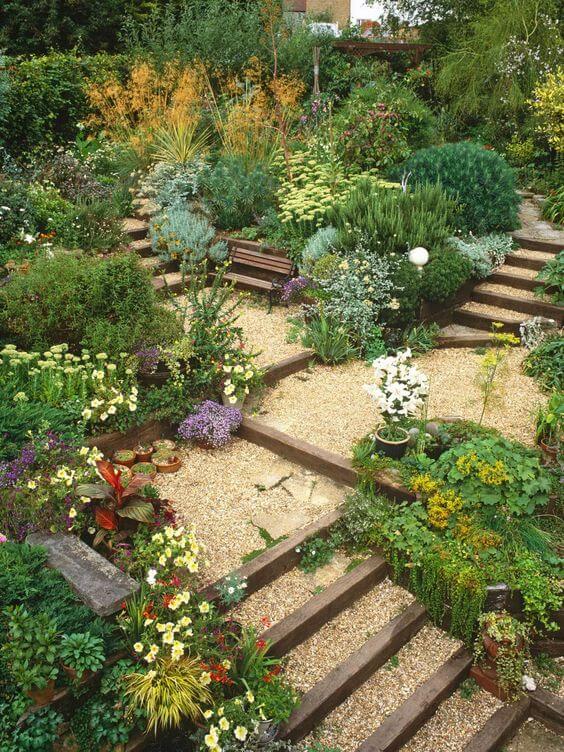
Image source: Hgvt
These garden stairs are full of rustic charm, using timber beams paired with crushed gravel to create clean and durable steps.
The layout flows naturally, giving your garden structure without looking too stiff. It’s easy to install and doesn’t require much precision, which makes it beginner-friendly.
Set sturdy wood planks in place to frame each step, then fill the gaps with gravel or pea stones for drainage and texture. Surround the path with a mix of low-growing herbs or flowers to soften the edges and bring it to life.
#9. Old Wooden Garden Stairs
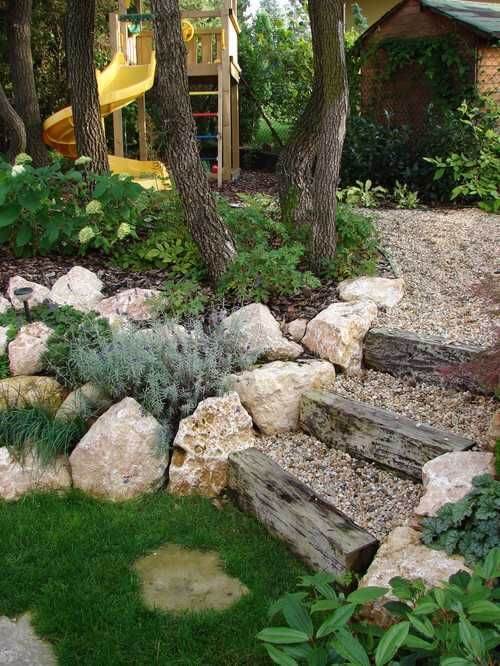
Image source: Architectureartdesigns
These garden steps use timeworn timber beams for a cozy, natural feel that blends beautifully with cottage or woodland gardens. Each weathered board adds rustic charm and pairs effortlessly with gravel and chunky stone borders.
To build something similar, repurpose old railway ties or reclaimed lumber and nestle them into compacted gravel. Add crushed stone between each step to help with drainage and weed control.
Let surrounding plants like lavender or creeping thyme spill slightly over the edges to soften the rugged texture.
#10. Simple Log Garden Steps
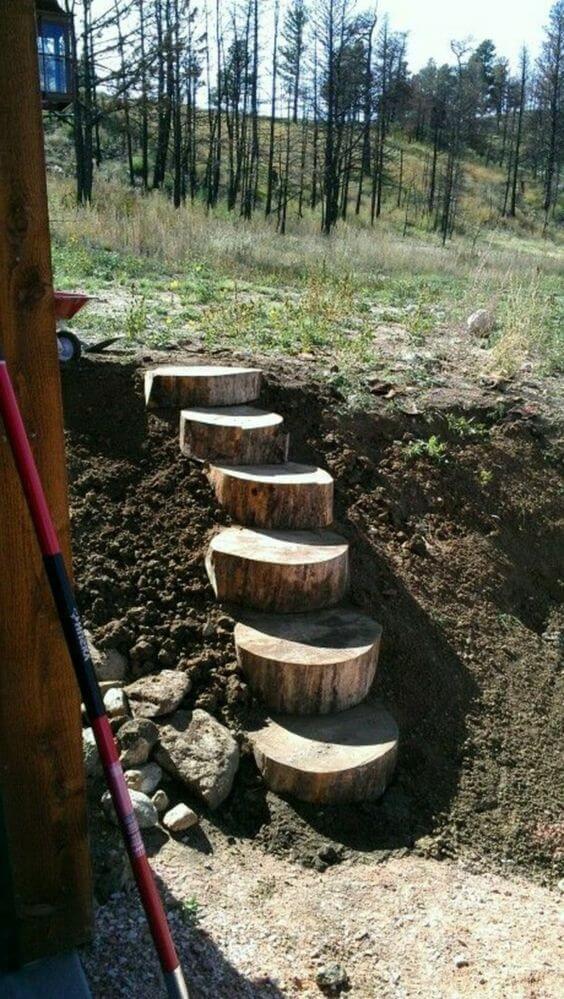
Image source: Freshideen
Thick slices of tree trunks turn into beautifully rustic steps that feel grounded and organic. These log steps are especially charming for cabins, woodland paths, or sloped backyard gardens.
To recreate this, cut logs into even rounds and bury each piece halfway into the soil for stability. Space them evenly along your slope, checking for level with each step.
Use mulch or gravel around the logs to blend them with the earth and reduce slipping.
#11. Cinder Block Garden Steps
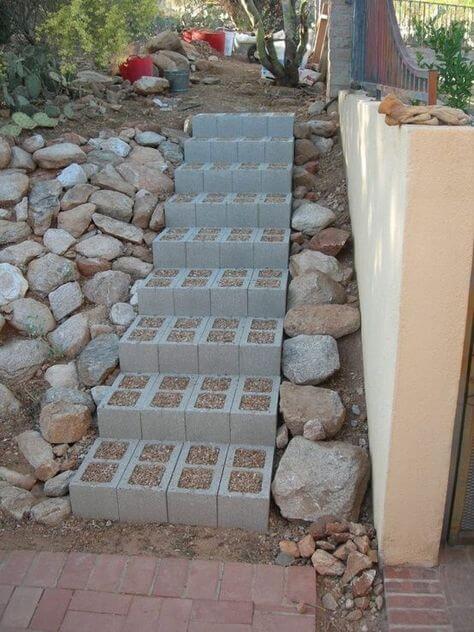
Image source: Homedit
Cinder blocks offer a strong and budget-friendly solution for creating garden steps, especially on steep slopes.
Their hollow centers not only lighten the structure but also give room for gravel, pebbles, or even plants. Lay the blocks in pairs side by side, ensuring each step is level before stacking the next.
Fill the gaps with small rocks or soil for added texture and drainage. You can also paint or decorate the blocks to match your outdoor aesthetic.
#12. Black Wooden Garden Stairs
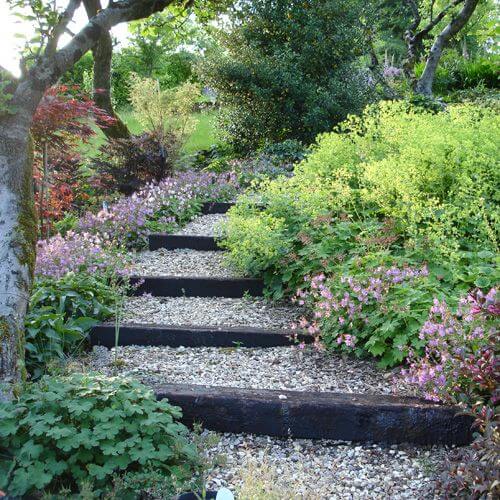
Image source: Agreenhand
Deep-toned timbers bring a bold, structured look to this soft, flowering pathway. The black wood contrasts beautifully with light gravel and the surrounding greenery, giving the stairs a polished, grounded effect.
You can install pressure-treated beams horizontally and secure them in place with stakes or rebar. Fill the spaces in between with gravel or pebbles to support drainage.
Consider planting cascading blooms or low groundcovers along the edges for an added layer of charm.
#13. Old Tire Garden Stair
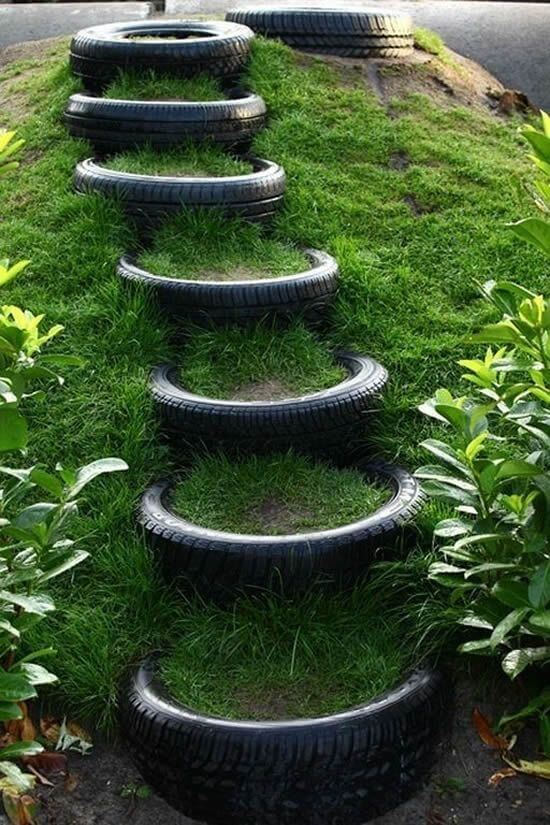
Reusing old tires gives your garden an unexpected twist that’s both eco-conscious and playful.
Each tire holds soil and grass, forming sturdy, cushioned steps with a soft, natural look. Cut tires in half and sink them into a slope, packing dirt tightly inside each one.
Let grass grow over the soil for a seamless blend into your lawn. This is a fun project that turns discarded materials into a safe, creative garden path, especially great for kids’ play areas.
#14. Iron Garden Steps
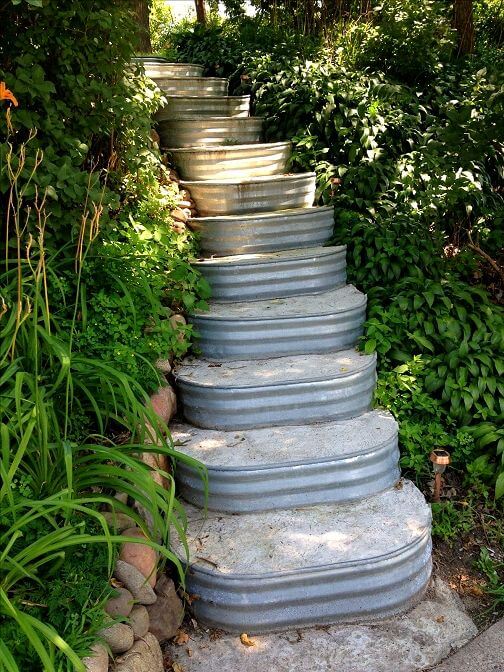
Image source: Dishfunctionaldesigns.blogspot
These curved iron steps bring a rustic charm and industrial strength to a shaded garden path. Their silvery tone reflects light softly, contrasting beautifully with the surrounding greenery.
To make this, cut sections of corrugated steel or use pre-formed livestock troughs and anchor them into the slope with rebar or stakes.
Fill each step with compacted gravel or concrete to ensure stability. This unique design adds character and durability, perfect for a lush backyard hideaway.
#15. Rock Garden Stair
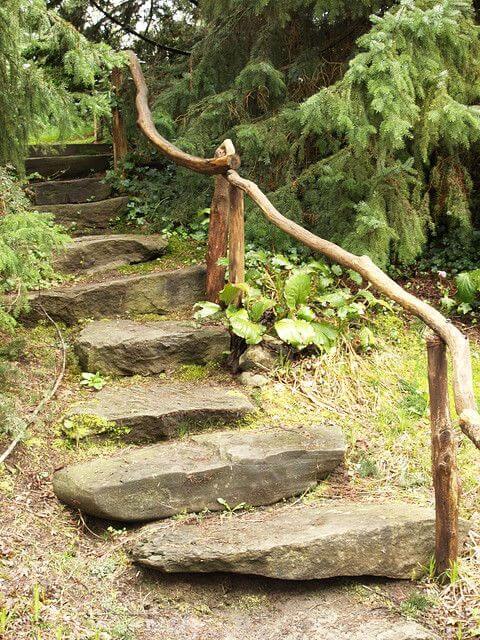
Image source: Flickr
These uneven stone slabs create a fairy-tale-like stairway that feels carved from the earth itself. The organic flow and irregular texture blend perfectly with tall trees and shady plants.
To replicate this look, choose flat natural rocks or flagstones and stagger them up a gentle slope. Anchor each stone into the soil with compacted gravel underneath for support.
Adding a rustic wooden handrail like this one gives extra charm and safety.
#16. Log Steps
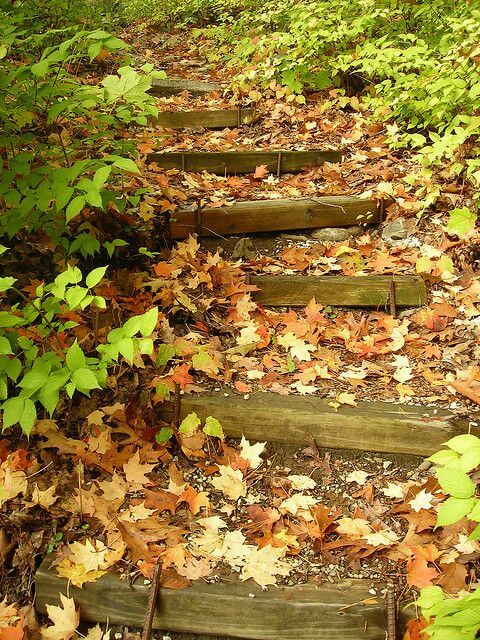
Image source: Flickr
These simple log steps tuck beautifully into a wooded slope, with fallen leaves adding seasonal texture and color. They’re ideal for rustic trails or shaded paths, offering a sturdy and natural way to navigate elevation changes.
To build this, cut uniform logs and anchor them into the soil using metal rebar or wooden stakes. Fill the steps with gravel or compacted dirt to create a level surface.
You can let nature soften the look over time or edge the sides with plants for added interest.
